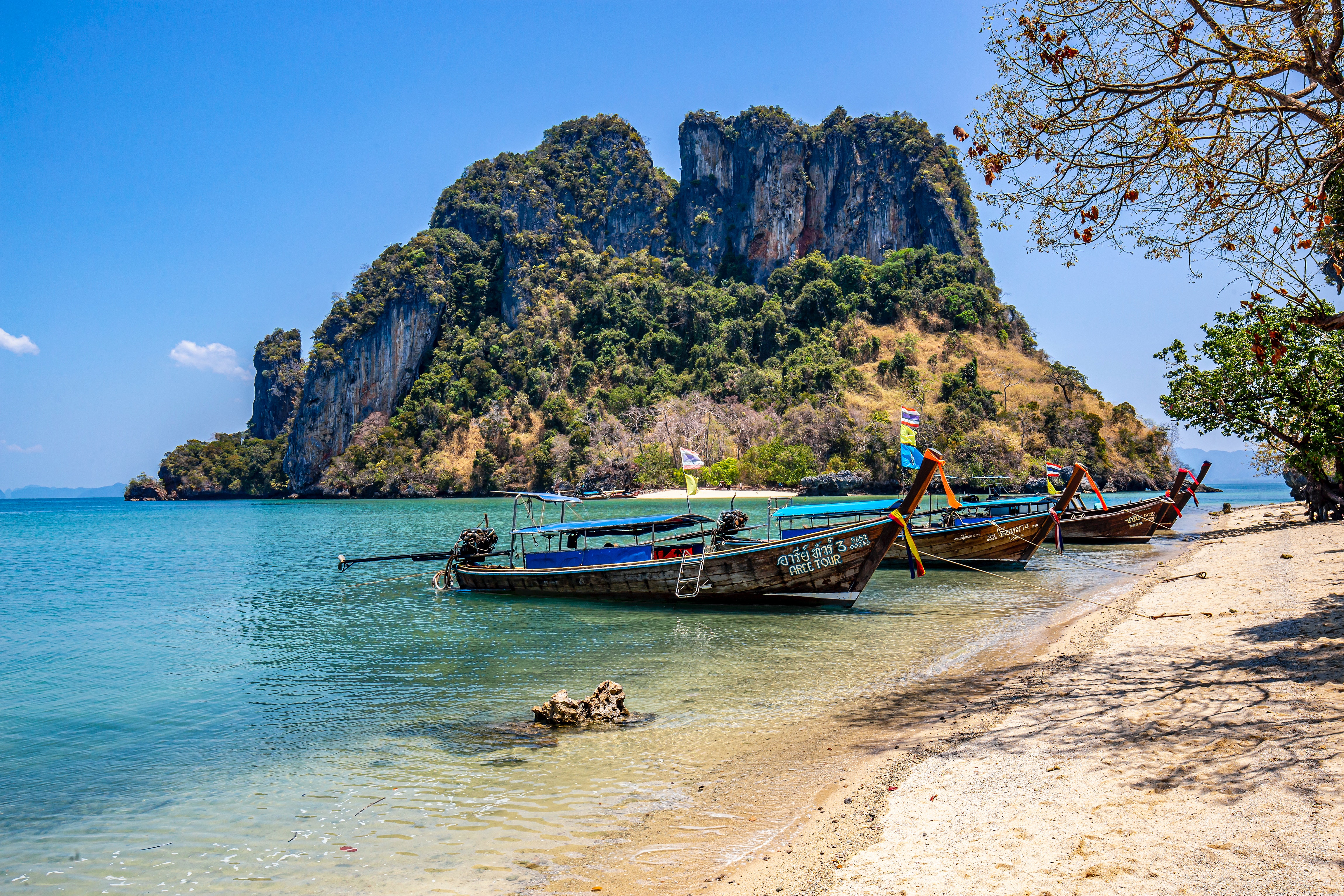Egypt, a land steeped in ancient history and dotted with architectural marvels, is a captivating destination that has mesmerized travelers for centuries. From the iconic pyramids to the tranquil Nile River and the bustling cities, Egypt offers a journey through time and culture. In this comprehensive trip planner’s guide, we embark on an unforgettable adventure to explore Egypt’s most important tourist places, each brimming with wonder and fascination Trip Planner Gide.
Cairo: The Gateway to Egypt’s Wonders

As your trip planner, Cairo is the perfect starting point to unveil the treasures of Egypt. This bustling metropolis harmoniously blends the old and the new, with historic landmarks and modern developments coexisting side by side.
Begin your exploration with the Giza Plateau, home to the iconic Pyramids of Giza, one of the Seven Wonders of the Ancient World. These ancient wonders, built as tombs for pharaohs, continue to awe visitors with their grandeur and mystery. Adjacent to the pyramids stands the enigmatic Sphinx, a colossal statue that adds to the allure of the site.
Cairo, the bustling capital of Egypt, is a city that bridges the past and the present, offering travelers a captivating blend of ancient wonders and modern delights. As the largest city in Africa and the Middle East, Cairo is a vibrant metropolis that serves as the cultural, political, and economic heart of Egypt. Here’s more about Cairo and what makes it a fascinating destination for any trip planner:
Ancient Sites and Historic Landmarks:
Cairo is steeped in ancient history, and it proudly showcases its rich heritage through its numerous historic landmarks. The Giza Plateau, located on the outskirts of the city, is home to the iconic Pyramids of Giza, including the Great Pyramid, the oldest and largest of the three pyramids. Alongside the pyramids stands the enigmatic Sphinx, a legendary monument with the body of a lion and the head of a human.
In the heart of Cairo, you’ll find the Egyptian Museum, a treasure trove of ancient artifacts and treasures, including the priceless treasures of Tutankhamun. The museum’s vast collection spans thousands of years of Egyptian history, offering visitors a fascinating journey through the Pharaonic era.
Islamic Cairo: A Living Open-Air Museum:
Islamic Cairo is a historic district that houses some of the city’s most significant Islamic architectural wonders. At its core lies the Al-Azhar Mosque, one of the oldest universities in the world and a center for Islamic learning since the 10th century.
Stroll through the narrow, labyrinthine streets of Khan El-Khalili, one of Cairo’s oldest bazaars, and immerse yourself in the bustling atmosphere of an ancient marketplace. Here, you can shop for souvenirs, handicrafts, spices, jewelry, and textiles while savoring the scents of Egyptian street food.
Reed Also Exploring the Enigmatic Beauty of Egypt’s
Modern Cairo: A City of Contrasts:
Beyond its historical treasures, Cairo is a vibrant modern city with a dynamic urban scene. The city boasts contemporary architecture, high-end shopping malls, luxury hotels, and lively nightlife.
The Nile Corniche, a scenic boulevard that runs alongside the Nile River, offers stunning views of the river and the city’s skyline. It’s a popular spot for locals and tourists alike to enjoy leisurely walks, boat rides, or dining in restaurants with Nile views.
Cuisine and Culinary Delights:
Egyptian cuisine is a delight for the senses, and Cairo is the perfect place to savor its diverse flavors. Whether you’re dining at traditional local eateries or upscale restaurants, you’ll have the chance to indulge in Egyptian staples such as koshari, falafel, ta’ameya (Egyptian falafel), and aromatic grilled meats.
For the sweet tooth, Cairo offers delectable desserts like baklava, basbousa, and konafa. Don’t forget to savor a traditional Egyptian tea or coffee at a local café, an essential part of Egyptian hospitality and socializing.
Vibrant Cultural Scene:
Cairo’s cultural scene is alive and thriving, with numerous theaters, galleries, and cultural centers showcasing Egyptian arts, music, and performing arts. The Cairo Opera House is a prominent venue for classical music, ballet, and opera performances.
The city hosts a wide array of festivals and events throughout the year, celebrating everything from literature and film to music and traditional arts.
Gateway to Other Egyptian Attractions:
Cairo’s strategic location makes it an excellent base for exploring other famous attractions in Egypt. You can easily access the historic city of Alexandria on the Mediterranean coast or travel south to Luxor and Aswan to explore more ancient temples and tombs along the Nile.
Luxor: A Living Museum of Ancient Thebes

Continue your trip planner’s journey to Luxor, known as the “world’s greatest open-air museum.” This city is home to an impressive array of ancient temples and monuments.
Discover the Karnak Temple Complex, a vast religious site dedicated to ancient Egyptian gods. The temple’s grand Hypostyle Hall, with its towering columns, is a sight to behold. Don’t miss Luxor Temple, accessible via the Avenue of Sphinxes, which offers a glimpse into the city’s past opulence.
Across the Nile lies the West Bank, home to the Valley of the Kings, where ancient pharaohs were laid to rest in elaborately decorated tombs. The Tomb of Tutankhamun remains a highlight of any Luxor visit.
Luxor, often referred to as the world’s greatest open-air museum, is home to a spectacular array of ancient temples that showcase the grandeur and sophistication of ancient Egyptian civilization. Situated on the east bank of the Nile River, Luxor was once the ancient city of Thebes, the capital of Egypt during the New Kingdom (1550-1070 BCE). Today, it remains a captivating destination for history enthusiasts and travelers eager to delve into Egypt’s rich cultural heritage.
Karnak Temple Complex: A Divine Tribute
The Karnak Temple Complex is one of the largest religious sites in the world and a highlight of any trip planner’s visit to Luxor. It was dedicated to the worship of the ancient Egyptian gods and was continually expanded and enhanced by successive pharaohs over the centuries.
The heart of the complex is the Great Temple of Amun, a monumental structure with towering columns and impressive statues. The Hypostyle Hall, a forest of 134 colossal columns, is particularly awe-inspiring, with the central avenue flanked by rows of 12 papyrus-shaped columns and alternating with 122 towering lotus-shaped columns. The Hall’s intricate carvings and reliefs depict the pharaohs’ military triumphs and religious rituals.
Karnak’s other notable features include the Avenue of Sphinxes, a processional pathway lined with human-headed lion statues connecting Karnak with Luxor Temple, and the Sacred Lake, believed to have been used for purification rituals.
Luxor Temple: A Fusion of History
Located at the eastern end of Luxor’s modern downtown, Luxor Temple is a fusion of history, art, and architecture. The temple was dedicated to the Theban Triad, consisting of the gods Amun, Mut, and Khonsu, and was used in various religious ceremonies and festivals.
At the entrance stands the colossal pylon, with massive statues of Ramses II guarding the gateway. The courtyard is lined with elegant columns and statues, while the inner sanctuaries hold beautiful chapels and shrines.
One of the temple’s most iconic features is the avenue of sphinxes connecting it to Karnak Temple, making the journey between the two sites a ceremonial processional route during religious festivals.
Valley of the Kings: Royal Tombs and Treasures
On the west bank of the Nile lies the Valley of the Kings, a burial site for ancient Egyptian pharaohs and high-ranking nobles of the New Kingdom. Over 60 tombs have been discovered in the valley, each meticulously carved and adorned with elaborate paintings and inscriptions.
The tombs were designed to safeguard the pharaoh’s mummy and treasures for the afterlife. Among the most famous tombs is that of Tutankhamun, discovered in 1922 by Howard Carter. The tomb’s intact treasures, including the iconic golden mask, offer a remarkable glimpse into the opulence and craftsmanship of ancient Egypt.
The Valley of the Kings also includes the tombs of other notable pharaohs. such as Ramses II, Ramses III, and Seti I, each boasting intricate artwork and religious scenes.
Deir el-Medina: Workers’ Village
Adjacent to the Valley of the Kings is Deir el-Medina, a unique village that housed the skilled workers and craftsmen responsible for constructing the royal tombs. These craftsmen, known as the “Sons of Ramesses,” lived in a well-organized community with homes, workshops, and even a small temple.
Exploring Deir el-Medina provides insights into the daily lives, skills, and beliefs of the artisans who toiled to create the magnificent tombs in the nearby Valley of the Kings. The site is home to well-preserved houses, decorated with scenes depicting everyday activities, religious rituals, and celebrations.
Aswan: A Tranquil Retreat with Nubian Heritage

As part of your trip planner, head to Aswan, a city that captivates with its tranquil beauty and Nubian heritage. It’s the perfect destination for travelers seeking a slower pace and a chance to immerse themselves in local culture.
Explore the High Dam, an engineering marvel that has controlled the flow of the Nile River and provided vital irrigation and electricity to Egypt. Nearby lies the majestic Philae Temple, dedicated to the goddess Isis and relocated to preserve it from rising waters.
For an authentic cultural experience, visit the Nubian villages along the Nile, where you can interact with hospitable locals, learn about their traditional way of life, and enjoy Nubian cuisine and music.
Aswan, an enchanting city situated along the Nile River in southern Egypt, is a destination that captivates travelers with its serene beauty, Nubian heritage, and historical significance. Aswan is known for its breathtaking landscapes, ancient monuments, and vibrant culture, making it a must-visit location for any trip planner exploring Egypt. Here’s more about Aswan and its unique offerings:
Nubian Heritage and Culture:
Aswan is deeply connected to its Nubian heritage, as it is home to one of the largest Nubian communities in Egypt. The Nubian people have a distinct culture and language, and their traditions have been preserved through generations.
Visiting a Nubian village is a highlight of any Aswan trip planner’s itinerary. Here, you can experience traditional Nubian hospitality, savor authentic Nubian cuisine, and admire the colorful and intricately decorated houses that add to the village’s charm.
Philae Temple and the High Dam:
One of the most iconic landmarks in Aswan is the Philae Temple, dedicated to the goddess Isis. Originally located on an island in the Nile, the temple was relocated to its current location on Agilkia Island to save it from being submerged after the construction of the Aswan High Dam.
The Aswan High Dam, an engineering marvel, was built to control the flow of the Nile River, provide hydroelectric power, and regulate water supply for irrigation. The dam’s construction led to the formation of Lake Nasser, one of the world’s largest artificial lakes, which further adds to the scenic beauty of Aswan.
Unfinished Obelisk:
Aswan is also famous for the Unfinished Obelisk, an ancient obelisk that was left abandoned in a granite quarry due to a crack that occurred during its carving. This massive obelisk, if completed, would have stood over 40 meters tall, making it one of the largest obelisks ever built.
Tombs of the Nobles:
On the west bank of the Nile, the Tombs of the Nobles offer a glimpse into the lives of ancient Egyptian nobles. These rock-cut tombs, dating back to the Old and Middle Kingdoms, are adorned with colorful paintings and inscriptions that depict scenes from daily life, religious rituals, and the journey to the afterlife.
Elephantine Island:
Elephantine Island, located in the Nile, is an oasis of tranquility in Aswan. It is one of the city’s most ancient sites, with evidence of settlements dating back to prehistoric times. The island houses various archaeological sites, including the ancient temple of Khnum, the ram-headed god of Elephantine Island.
Aga Khan Mausoleum:
Perched on a hill on the west bank, the Aga Khan Mausoleum is a beautiful white marble structure dedicated to the memory of Aga Khan III. The mausoleum offers panoramic views of the Nile and the surrounding landscapes.
Abu Simbel: Ancient Architectural Prowess

No trip planner is complete without a visit to Abu Simbel, a testament to ancient Egypt’s architectural prowess. Located near the southern border with Sudan, Abu Simbel is renowned for its monumental rock-cut temples.
The Great Temple of Abu Simbel, dedicated to Ramses II, features colossal statues guarding the entrance. Inside, intricate carvings and paintings depict scenes from the pharaoh’s military victories and religious rituals.
Adjacent to Ramses II’s temple stands the smaller but equally impressive Temple of Hathor, dedicated to his beloved wife, Queen Nefertari.
Alexandria: History by the Sea

Conclude your trip planner’s journey in Alexandria, a coastal city that holds a rich tapestry of history and culture. Founded by Alexander the Great, Alexandria boasts a fascinating blend of Egyptian, Greek, and Roman influences.
Visit the Bibliotheca Alexandrina, a modern architectural marvel and homage to the ancient Library of Alexandria, one of the most famous libraries of the ancient world.
Explore the Catacombs of Kom El Shoqafa, an underground necropolis blending Egyptian and Greco-Roman architectural styles. Admire the stunning mosaics, sculptures, and reliefs that adorn the tombs.
Alexandria, a coastal city in northern Egypt. Is a place of historical significance and cultural diversity that reflects its illustrious past as a center of learning and commerce. Founded by Alexander the Great in 331 BCE, Alexandria has been a crossroads of civilizations. Blending Egyptian, Greek, Roman, and Arab influences. Today, it remains a vibrant and cosmopolitan city with a rich tapestry of history, architecture, and maritime charm. Here’s more about Alexandria and what makes it a captivating destination for any trip planner:
Bibliotheca Alexandrina: A Modern Tribute to Ancient Wisdom:
The Bibliotheca Alexandrina, one of the city’s most remarkable landmarks. Is a modern architectural marvel that pays homage to the ancient Library of Alexandria. One of the most famous libraries of the ancient world. The library houses a vast collection of books. Manuscripts, and digital resources, making it a hub of knowledge, research, and cultural exchange. The library also features museums, art galleries, and a planetarium. Making it a dynamic cultural center that attracts scholars and visitors from around the world.
Qaitbay Citadel: A Fortress on the Mediterranean:
The Qaitbay Citadel is a fortress located on the eastern harbor of Alexandria. Built in the 15th century by Sultan Qaitbay. The citadel stands on the site of the ancient Pharos Lighthouse, one of the Seven Wonders of the Ancient World. The citadel offers stunning views of the Mediterranean Sea and the city. Making it a popular spot for both history enthusiasts and those seeking panoramic vistas.
Catacombs of Kom El Shoqafa: An Underground Necropolis:
The Catacombs of Kom El Shoqafa is an ancient underground burial site that dates back to the 2nd century AD. A blend of Egyptian and Greco-Roman architectural styles, the catacombs offer a unique insight into the ancient funerary practices of Alexandria. The chambers are adorned with intricate carvings, reliefs, and a mix of Egyptian and Roman religious symbols.
Alexandria’s Waterfront: Corniche and Montaza Palace:
The Alexandria Corniche is a picturesque waterfront promenade that runs along the Mediterranean Sea, providing a refreshing escape from the urban bustle. The Corniche is lined with cafes. Restaurants, and parks, offering a serene spot to enjoy a leisurely stroll, dine by the sea. Or watch the sunset over the water.
Nearby, Montaza Palace and Gardens offer a delightful retreat. The palace was once a summer residence for the Egyptian royal family and is surrounded by lush gardens that invite visitors to relax in their tranquil ambiance.
Cultural Attractions and Museums:
Alexandria is a city of cultural richness, and its numerous museums and galleries showcase its diverse heritage. The Alexandria National Museum is a must-visit for history enthusiasts. As it houses a vast collection of artifacts that chronicle Egypt’s history from ancient times to the modern era.
The Greco-Roman Museum displays an extensive collection of artifacts from Alexandria’s Hellenistic and Roman periods. Providing valuable insights into the city’s ancient past.
Sharm El Sheikh

I believe you may be referring to “Sharm El Sheikh,”. A popular resort destination located on the southern tip of the Sinai Peninsula in Egypt. Sharm El Sheikh is renowned for its stunning Red Sea coastline. Crystal-clear waters, and vibrant coral reefs, making it a haven for beach lovers, divers, and snorkelers. As a premier tourist destination. Sharm El Sheikh offers a blend of relaxation, adventure, and natural beauty that attracts travelers from all around the world. Here’s more about Sharm El Sheikh and what makes it a sought-after vacation spot:
Diving and Snorkeling Paradise:
Sharm El Sheikh is often referred to as the “Red Sea Riviera” due to its exceptional diving and snorkeling opportunities. The waters are teeming with an abundance of marine life and vibrant coral reefs, making it a paradise for underwater enthusiasts. Popular diving sites such as Ras Mohammed National Park. Tiran Island, and the Straits of Tiran offer a chance to encounter colorful fish, turtles, rays, and even dolphins.
Ras Mohammed National Park:
As one of Egypt’s most famous national parks. Ras Mohammed is a protected area that boasts a diverse range of flora and fauna, both underwater and on land. With its dramatic cliffs, mangroves, and coral-fringed coastline. The park offers breathtaking scenery and opportunities for bird watching, hiking, and snorkeling.
Naama Bay:
Naama Bay is the heart of Sharm El Sheikh’s tourism scene. This vibrant area is brimming with hotels, restaurants, cafes, and shops. Catering to the needs of tourists seeking entertainment and relaxation. The bay’s shallow waters make it an ideal spot for swimming and water sports. At night, the area comes alive with a lively atmosphere, featuring live music, traditional Egyptian performances, and bustling markets.
Old Market (Old Town):
For a taste of local culture and a break from the bustling resort areas. Head to the Old Market in Sharm El Sheikh’s Old Town. Here, you can experience authentic Egyptian life. Browse through local shops selling souvenirs, spices, and handicrafts, and enjoy traditional Egyptian dishes at local restaurants.
Mount Sinai (Jebel Musa):
For those seeking an adventure beyond the beaches. Sharm El Sheikh offers the opportunity to embark on a memorable trek to Mount Sinai. A mountain of biblical importance. It is believed to be the place where Moses received the Ten Commandments. The hike to the summit is typically undertaken at night, allowing visitors to witness a breathtaking sunrise from the top.
St. Catherine’s Monastery:
Located near Mount Sinai, St. Catherine’s Monastery is one of the oldest working monasteries in the world. It is a UNESCO World Heritage Site and houses a remarkable collection of religious artifacts and manuscripts. The monastery’s remote setting adds to its spiritual allure.
Hurghada

Hurghada, a vibrant beach resort city on the Red Sea coast of Egypt. Has transformed from a small fishing village into one of the country’s most popular tourist destinations. With its sandy beaches, crystal-clear waters, and abundant marine life. Hurghada offers a paradise for sun-seekers, water sports enthusiasts, and underwater adventurers. Here’s more about Hurghada and what makes it an ideal destination for a relaxing and adventurous getaway:
Beautiful Beaches and Coastal Resorts:
Hurghada is renowned for its stunning beaches, stretching along the Red Sea coastline for over 40 kilometers. The city is home to a wide range of resorts and hotels that cater to various budgets and preferences. From luxurious all-inclusive resorts to cozy boutique hotels. Visitors can find the perfect accommodation to suit their needs and enjoy easy access to the beach and water activities.
Red Sea Diving and Snorkeling:
Hurghada is a mecca for divers and snorkelers. Offering an unforgettable experience exploring the vibrant coral reefs and rich marine life of the Red Sea. The warm waters are home to an incredible array of colorful fish, sea turtles, rays, and even dolphins. Popular diving sites like Giftun Island. Abu Ramada, and the Straits of Gubal provide excellent opportunities to encounter this underwater paradise.
Giftun Islands National Park:
The Giftun Islands, located just off the coast of Hurghada. Are part of a protected marine area known as the Giftun Islands National Park. These islands are a popular destination for day trips and boat tours. Here, visitors can snorkel, swim, or simply relax on the white sandy beaches. The waters surrounding the islands are teeming with marine life. Making it an ideal spot for snorkelers to explore the colorful coral reefs.
Water Sports and Adventure Activities:
Beyond diving and snorkeling, Hurghada offers a plethora of water sports and adventure activities to suit all ages and interests. Visitors can indulge in windsurfing, kiteboarding, parasailing, jet skiing, and banana boat rides. For those seeking a bit more tranquility. A leisurely boat trip on a glass-bottom boat offers a chance to admire the marine life without getting wet.
Desert Safari and Quad Biking:
Hurghada’s desert landscape presents an opportunity for adventure seekers to embark on a thrilling desert safari or quad biking excursion.
Hurghada Marina and El Dahar:
Hurghada Marina is a bustling area with a vibrant atmosphere, featuring an array of restaurants, cafes, bars, and shops. It’s an ideal place to enjoy a relaxing stroll, dine with a view of the yachts, or shop for souvenirs and local crafts.
El Dahar, the old town of Hurghada, offers a glimpse into traditional Egyptian life with its local markets, mosques, and bustling streets. Visitors can immerse themselves in the city’s authentic culture and sample delicious Egyptian street food.
Conclusion
Egypt, with its ancient wonders and vibrant culture, promises an unforgettable journey through history and time. As a trip planner, exploring Egypt’s most important tourist places offers a chance to witness the architectural achievements of ancient civilizations, immerse oneself in a land of legends and myths, and appreciate the enduring legacy of the ancient world.
From the pyramids of Giza to the temples of Luxor, the serene Nile River to the bustling streets of Cairo, Egypt’s treasures unfold like pages in a captivating history book. Whether you’re a history buff, an architecture enthusiast, or a culture seeker, Egypt’s wonders await you with wonder, awe, and appreciation for the timeless beauty of this remarkable destination.








Leave a Reply